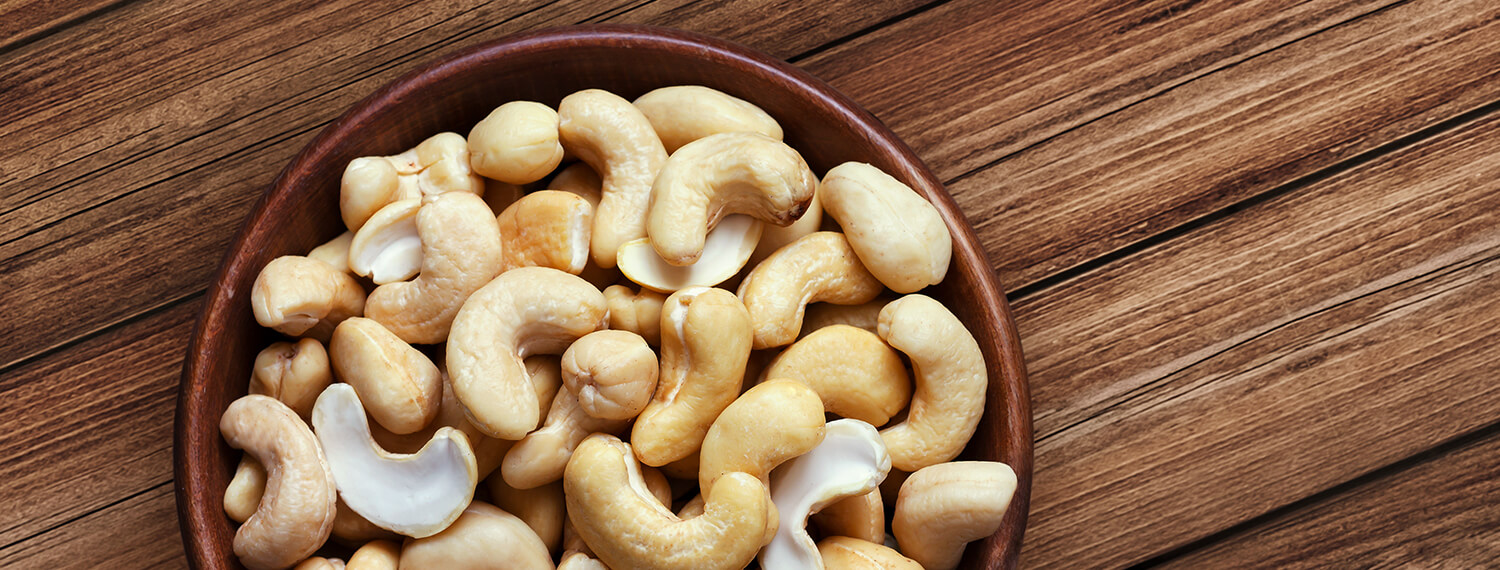The United States clearly has a love affair with cashews…
Ninety percent of the world’s cashew production is consumed here!
This delicious and nutritious nut has been around for centuries.
Let’s take some time to find out more about the wonderful cashew.
Where Do Cashews Come From?
Cashews are called caju in Brazil, maranon in some Spanish-speaking locations, and merey in Venezuela.
The original word is acaju (meaning the ‘nut that produces itself’), which comes from the language of the Tupian people who live in northeast Brazil where cashew trees originate.
However, you can now find cashews cultivated in many countries that enjoy tropical climates.
The cashew tree was first exported from Brazil to Goa, India by the Portuguese between 1560 and 1564. As time evolved, the tree continued to extend its presence to both Southeast Asia and Africa where it is still grown today.
In the early 1970s, the majority of global cashew production (68 percent) happened in Africa, specifically Mozambique (a former Portuguese colony) and Tanzania. Since then cashew production has shifted to Asian countries, with Vietnam being the largest exporter of cashews for the last 11 years.
Cashews: the Nut That Is Not a Nut
The cashew is technically not a nut; it is a seed harvested from the cashew apple, the fruit produced by cashew trees.
Unlike many other nuts and seeds, the cashew grows outside the fruit instead of inside, within a kidney-shaped drupe that hangs at the end of the cashew apple’s base.
This drupe is considered the ‘true’ fruit of the tree while the cashew apple is thought of as an accessory or ‘false’ fruit.
Contained within this ‘true’ fruit is a single seed—the cashew.
It is worthwhile adding that, while cashews are certainly the most famous product of the cashew tree, the cashew apple is a delicacy in many countries, including my home country Brazil, and is used to make juices, jams, curries and an Indian liqueur called feni.
Why Cashew Shells Are Poisonous
Raw cashews contain urushiol, a resin that is toxic if ingested and can cause rashes or burns if it contacts the skin.
To remove this substance, cashews must go through a rigorous roasting or steaming process to ensure they are safe to eat. This is why you will always see cashews shelled at the grocery store.
Before that roasting process, however, cashews are a beautiful shade of green!
Cashews belong to the same family as mangos, poison ivy, and pistachios.
The harmful part of the cashew (which can also be found in mango plants) is the same ingredient that makes poison ivy poisonous.
Are Cashews Good for You?
Cashews are an excellent source of micronutrients, i.e. vitamins and minerals including copper, manganese, magnesium and phosphorous, vitamin K, iron, and zinc.
A 28-gram (1-oz) serving of dry roasted cashews provides 9 percent of the recommended daily value of protein, but also 8 percent of the daily value of calories.
As always, remember that nuts are high energy dense foods, so a little goes a long way!
Cashews in the Kitchen
Cashews are well known for their rich, buttery flavor and texture.
They are widely used in Asian cuisine and are an ingredient in many stir-fry dishes.
Cashews are increasingly popular in the making of dairy replacements, such as cashew ‘butter’, cashew ‘milk’, cashew ‘cheese’, and cashew ‘ice cream.’
They are also an excellent ingredient for thickening sauces.
With so many ways to use this nutritious ingredient, grab some cashews and experiment in the kitchen today!


